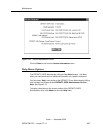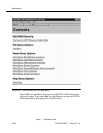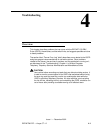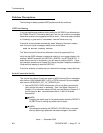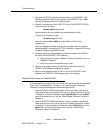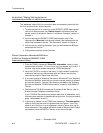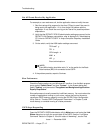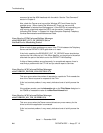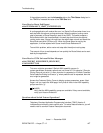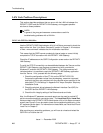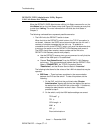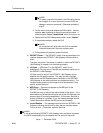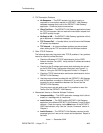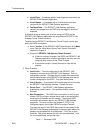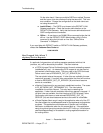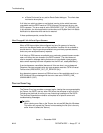
Troubleshooting
Issue 1 — December 2002
4-7DEFNETM.PDF — Avaya CT 1.2
If the problem persists, use the Information tab on the Tlink Status dialog box in
the TSM32 to increase the value of the TSDI Size field.
Users Receive Route End Report
with PEFORMANCE_LIMIT_EXCEEDED (52)
A routing application will receive this error in a Route End Event when there is no
wait step after the adjunct routing vector step. When the adjunct routing vector
step is executed, a Route Request is sent to the G3PD. The switch expects a
Route Select within the time specified in the wait step that follows the adjunct
routing vector step. If there is no wait time, the switch does not wait and sends the
Route End event with CSTA error 52. When the Route Select is sent by the
application, it will be rejected with Cause Invalid Cross-Reference ID.
To avoid this problem, add a vector wait step after the adjunct routing step.
The amount of time to wait depends on how quickly the Route Select can be sent
back by the application.
Users Receive CSTA Universal Failure Messages
with GENERIC_SUBSCRIBED_RESOURCE_
AVAILABILITY (41)
This error might be generated if Switch ASAI capability groups (in
system-parameters customer-options) are not turned on. For example, if Domain
Control Group is not set to "y" when a monitor is requested, or if Switch-Classified
Calls/Predictive Dialing is not set to "y" when predictive call is requested, then this
error might be generated.
Access the Customer Option Forms to display system parameters, press <Next
Page> until you reach the ASAI page. Verify that all fields in the ASAI capability
groups are set to "y".
NOTE:
Verify that the ASAI capability groups are available. If they are not available,
notify your Account Executive.
Questions about Switch Feature Operations?
Telephony Services Application Programming Interface (TSAPI),Version 2,
indicates the primitives to use to control calls. For actual feature behavior, you will
need to refer to a switch Feature Description document.



